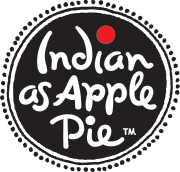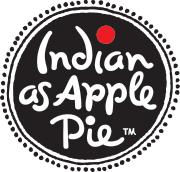September 08, 2022


My father comes from a village in the state known as the breadbasket of India - Punjab. Growing up visiting was a special experience. As soon as we would turn off the main highway from the biggest nearby city, our car would be engulfed in green and gold from the mustard greens and wheat fields. Our family and most of the residents of our village are farmers or tied to the land in some way. Their main crops include those that make bread, or roti. This unleavened bread made from stone-ground durum wheat is so critical to our daily meals that the very word not only symbolizes bread, but in fact refers to being called to a meal - regardless of what we are eating. "Come eat roti." It was so critical that asking for rice just made my family jokingly label me as more South Indian, where rice is grown. Back then before it was easily found everywhere in the smaller villages it was more expensive than flour. And, my extended family would have to scramble to even serve me rice. It was seen as a substandard ingredient to the beloved roti. Some of you may be confused because you connect Indian cuisine to naan. I try to educate those that don't realize we truly don't eat much naan in our households. While it is delicious, it's a leavened bread made from white flour in a tandoori oven. We don't have those ovens in our homes and we prefer whole wheat flat bread made at home on a tava on the stovetop. Roti is also called chapati or phulka. There is more on that in the bread section of my third book, Indian For Everyone. When you take that roti, though, and add other ingredients to the dough or by stuffing it, it becomes a parantha. That's what I want to showcase in this blog post. You can add anything into the dough. Often - especially in our village - it was the leftovers from the night before. I still remember my youngest bua making us hungry and demanding kids a delicious breakfast by adding chopped onion, green chiles, and spices because she didn't have any other ingredients on hand.
In the recipe below, I tried avocado (per the suggestion of one of my readers) for taste and nutrition, minced onion for crunch, and chile peppers for a little heat and flavor. This is obviously a little easier for those of you already familiar with the art of making Indian bread. Stay tuned if you need help on how to roll these beauties out and cook them up. I'll have future posts and videos on that.
RECIPE
Avocado Parantha
3 cups chapati flour *
3 avocado, seed and skin removed
2 teaspoons salt
1/4 cup water
1/2 cup minced onion
4 Thai chiles, stems removed and thinly sliced
1. In a food processor or a deep bowl add the flour, avocado, and salt. Process until everything pulls together. There's no need to slice the avocado, but it can help to use smaller pieces. I like to add my main ingredients before adding water because they have moisture, which means less water needed later.
2. Add the water and process until the dough come together like pizza dough. This is where you'll use your judgement. If the dough is too hard, add a little more water, but if it's too soft add a little dry flour. Add both water and/or flour one tablespoon at a time.
3. Remove to a roomy bowl if using a food processor or mixer, add the onion and chiles, and knead by hand. I add these in later so that they remain crunchy in the rolled out and cooked bread. You can let this sit under a damp cloth for 20 minutes, but there is no need to let the dough sit.
4. Roll the dough out in small round balls and using a rolling pin roll them thin like a tortilla. Use a little dry flour to avoid sticking. Then, cook them on the stovetop in a skillet until slightly brown on both sides. Brush with oil or ghee towards the end of cooking on both sides. Serve warm with butter and achaar. If you are new to rolling out homemade Indian flatbread I'll have more tips for you in the future. There will be a learning curve, but no worries we'll get you there!
* Chapati flour is a durum wheat stone ground flour that is very different than the hard red wheat flour in most mainstream grocers. If you cannot make it to an Indian grocer to buy this then go for the 'whole white wheat baking flour' now found in many mainstream grocery stores. When selecting chapati flour, always look for the package that says 'whole' wheat. Or, you'll be getting a more processed and less nutritious version. The same concept as whole wheat flour vs. all purpose.
Comments will be approved before showing up.

